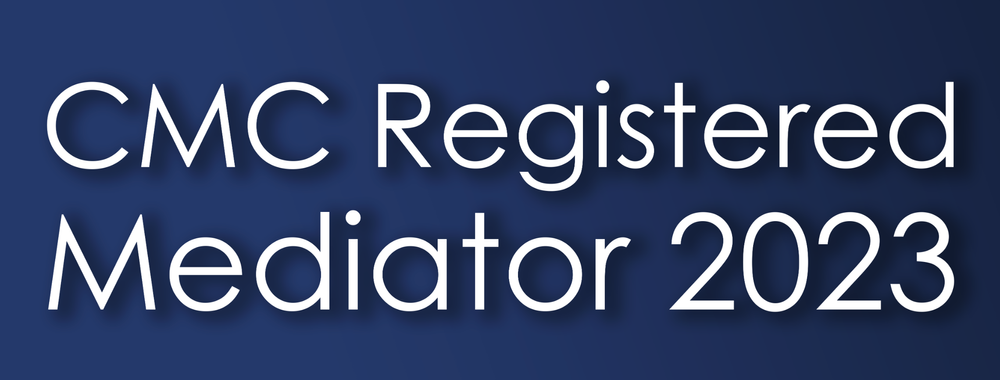Our panel mediator and specialist clinical negligence solicitor Andrew Hannamdiscusses the European Court of Human Rights Decision re: Charlie Gard
This article was first published by LexisNexis
What issues did this case raise?
The domestic Courts and the European Court of Human Rights were tackling the difficult and emotionally charged issues of when it was appropriate to withdraw life sustaining treatment for a child/when is it appropriate to expose the child to experimental treatment in the hope of saving/prolonging life. Proceedings had begun in February 2017 when Great Ormond Street Hospital made an application to the High Court for an Order stating that it would be lawful and in Charlie’s best interest for artificial ventilation to be withdrawn and palliative care provided. The application was opposed by the parents. The question of possible nucleoside therapy was raised by the parents as the proceedings progressed and additional information was put before the High Court. When the High Court issued its final judgement the Order included a third element that it would not be in Charlie’s best interest to undergo nucleoside treatment.
During first instance proceedings which lasted for 3 days in April 2017 the High Court heard evidence from Charlie’s parents, his guardian and a number of expert witnesses. These experts included those treating Charlie at Great Ormond Street as well as second opinions from consultants in paediatric intensive care from four other hospitals. In addition the Judge visited Charlie in hospital.
The medical evidence as presented by Great Ormond Street Hospital was such that Charlie was so damaged that there was no longer any movement nor any evidence of a sleep/wake cycle. The treating team’s opinion was that there was no further treatment available to Charlie which could improve him from his current situation. It was the treating team’s opinion that Charlie could probably experience pain but was unable to react to it in a meaningful way.
Charlie’s parents obtained support from an expert in America who was prepared to offer Charlie nucleoside therapy. The evidence from the Doctor in America was that
it is very difficult for me never having seen him, being across the Atlantic and seeing bits of information. I appreciate how unwell he is. His EEG is very severe. I think he is in the terminal stage of his illness. I can appreciate your position. I would just like to offer what we can. It is unlikely to work, but the alternative is that he will pass away.”
There was no suggestion that there could be any reversal of the structural damage to Charlie’s brain and the probability of benefit was described as “low but not zero”.
Charlie himself was represented by his guardian who had been appointed by the High Court. Throughout the guardian argued that it was not in Charlie’s best interest to travel to America to receive purely experimental treatment with no real prospect of improving his condition or quality of life.
The decision of the High Court was given by Mr Justice Francis on 11 April 2017. He acknowledged that although parents with parental responsibility have the power to give consent for their child to undergo treatment, as a matter of law, overriding control is vested in the Court exercising its independent and objective judgement in the child’s best interest. In making that decision the Judge said the welfare of the child is paramount. He confirmed that the starting point is the strong presumption of the sanctity of life, and a course of action which will prolong life. He confirmed that in considering Charlie’s best interest that that phrase encompassed medical, emotional, and all other welfare issues. The Judge concluded that it was not in Charlie’s best interest to be taken to the USA for treatment which he described as “problematic, but possible”.
The decision of the High Court was appealed to the Court of Appeal who gave their decision on 23 May 2017.
The appeal was brought on the basis that the High Court Judge had made an error by relying on the “best interests” test alone. It was argued that different approaches should be taken depending on whether the proposal contemplates a viable alternative option. In the event of such an option being available the parents argued that such preferred treatment options should only be overridden if it is established that the option would likely cause the child “significant harm”.
In support of that argument the parents relied on Article 8 of the European Convention on Human Rights. Reference was also made to Articles 2 and 5 although arguments were not particularly developed under those Articles.
The Court of Appeal found that the High Court was entitled to conclude that the nucleoside treatment option would be futile and would have no benefit. As a consequence nucleoside treatment was not a viable option before the Court. That being the case the Court of Appeal concluded that the “significant harm” test did not apply. The Court of Appeal did accept, however, that the “significant harm” argument was potentially valid and did address that in this case. It concluded that “the prospect of significant harm arises, however, in the context of such treatment from the Judge’s finding that it would be of no benefit for Charlie and that he would need to continue with the regime of life sustaining treatment, which the Judge concluded was not otherwise in his best interest, so that the nucleoside therapy could be administered.”
The case then proceeded to the Supreme Court where on 8 June 2017, it rejected the applicants’ request for permission to appeal. In its determination on that issue it concluded “finally the European Court of Human Rights has firmly stated that in any judicial decision where rights under Article 8 of the parents and the child are as at stake the child’s rights must be the paramount consideration. If there is any conflict between them the child’s interests must prevail.” The Supreme Court also reiterated the findings of the Court of Appeal that even if the “best interests test were replaced with a test of significant harm” it is likely that Charlie would suffer significant harm if his present suffering is prolonged without any realistic prospect of improvement.
Despite the Supreme Court rejecting the applicants’ permission to appeal the Government then requested a hearing before the Supreme Court for directions on whether they could direct a further stay of the declaration of the High Court. Such a stay was granted and the case moved to the European Court of Human Rights.
The case was heard before the European Court on 27 June 2017 and after carefully reviewing all of the arguments in the domestic courts and considering how Articles 2, 5 and 8 of the convention would apply the European Court concluded that it would not interfere with the domestic courts’ decision. The European Court did address the issue as to whether or not the appropriate test was whether the decision should be taken in the child’s “best interest” or whether the Court should consider whether there is a risk of “significant harm”. In its judgement it did say that there was a broad consensus in support of the idea that in all decisions concerning children their best interest must be paramount. The Court did go on to say, however, that the facts of the present case were exceptional and there was therefore a lack of guidance in the Court’s case law on this point. The Court concluded, however, that it did not need to determine which was the appropriate test because it was clear from the decisions of the Court of Appeal and the Supreme Court that there was, in any event, a risk of “significant harm” to Charlie.
What are the practical implications of this case?
The theme which emerges from the judgements of the appellate courts is the importance that was given to the very thorough way that the case had been investigated with numerous expert opinions being sought all of which were consistently pointing in one direction. Whilst the European Court indicated the broad consensus to the appropriate test being the child’s best interest it did not rule out, in limited cases, considering the case on the basis on whether there is risk of “significant harm” to the subject of the proceedings. It seems clear that this can only be considered in the event of their being a viable alternative but in those circumstances it does seem that such an argument has been left open for the future.
Mr Justice Francis in concluding his judgement highlighted the potential importance of the parties having used the services of a mediator and suggested that whilst possibly not resolving all issues mediation would have been likely to have produced a greater degree of shared understanding and potentially limited some of the heartache involved in the proceedings. That call to arms for mediation in serious medical treatment cases will doubtless be picked up in future situations.
What impact will the decision have on similar cases involving children?
The best interest/significant harm issue is one that is likely to be considered in the future – in cases where there is a viable alternative treatment option.
To what extent is the Judgement helpful in clarifying the law in this area?
It is clear from the domestic judgements in the Charlie Gard case and decisions proceeding it such as An NHS Trust v M B (2006) 2 F L R 319 that the courts will examine meticulously cases where hospital trusts are seeking permission to withdraw life sustaining treatment but that the courts will grant such permission where the continuation of treatment is futile.
Are there still any grey areas/unresolved issues practitioners will need to watch out for?
The grey area/unresolved issue is the one referred to above in looking at cases where there is a potential viable alternative and whether the appropriate test is whether it would be in the child’s best interests or whether to adopt the alternative treatment would put the child at risk of suffering significant harm.
What are the implications for practitioners, what will they need to be mindful of when advising in this area?
Whilst this case was one of enormous importance to Charlie’s parents – as frankly illustrated by Mr Justice Francis in his judgement when he said
I know that this is the darkest day for Charlie’s parents who have done everything that they possibly can for him and my heart goes out to them as I know does the heart of every person who has listened to this tragic case during the course of the past week or so. I can only hope that in time they will come to accept that the only course now in Charlie’s best interest is to let him slip away peacefully and not put him through more pain and suffering.
In both the domestic appellate courts and the European Court, however, considerable endorsement was given to the extensive expert evidence that was sought and brought before the court which allowed the court to reach its conclusions with considerable certainty. These proceedings will clearly be expensive to bring but it is nonetheless clear that parties’ representatives will be expected to adduce comprehensive expert evidence to assist the court.
What are the trends in this area?
The reference at the conclusion of Mr Justice Francis judgement to the importance of the parties seeking assistance from mediation before positions become too entrenched is likely to be adopted. Not only will mediation assist the parties in a better mutual understanding but it is likely, if not to resolve issues, then to narrow the issues and to mitigate the significant cost impact of these cases.
Andrew Hannam is a Partner at Enable Law LLP and a member of our specialist clinical negligence mediation panel.


